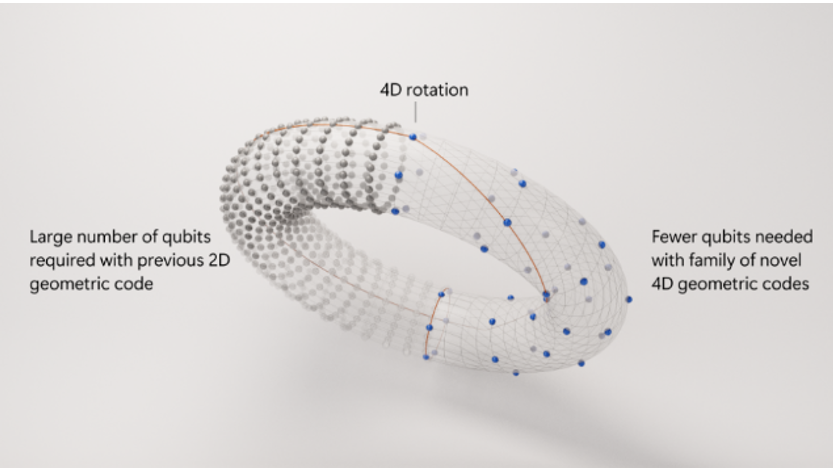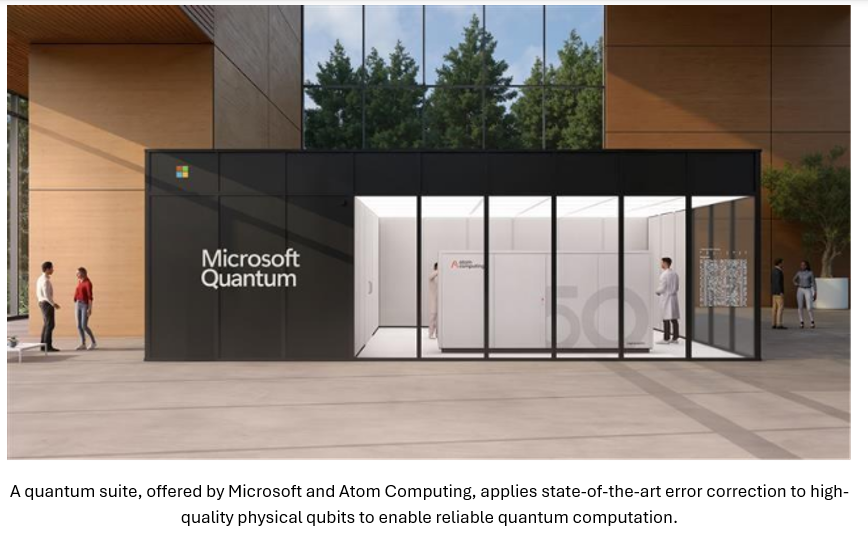Microsoft said it has developed quantum computing error-correction codes that can create a 1,000-fold reduction in error rates. The company also said it is landing on-premise interest for its Microsoft Quantum compute platform, a collaboration between Microsoft and Atom Computing.
The company said its four-dimensional geometric codes require few physical qubits per logical qubit and can check for errors in a single shot. Error correction is a huge topic in quantum computing and companies are using physical qubits with high fidelities and applying error correction codes to solve problems.
With Atom Computing, Microsoft created and entangled 24 reliable logical qubits. Microsoft used its qubit-virtualization system combined with Atom Computing's neutral atoms. Matt Zanner, Senior Director of Microsoft Quantum, said Atom Computing's neutral atom approach means it can adjust to error correction advances quickly.
- Microsoft unveils Majorana 1, aims to scale quantum computing
- Microsoft launches Quantum Ready Initiative
- Microsoft claims hybrid quantum breakthrough with Quantinuum, partners with Atom Computing
Microsoft said that its family of 4D geometric codes are suitable for qubits with neutral atoms, ion traps and photonics. These 4D geometric codes require fewer physical qubits to make each logical qubit, have fast clock speeds and improve the performance of quantum hardware.

The error-correction codes, available in Microsoft Quantum compute platform, will enable the system to deliver 50 logical qubits in the near term and scale to thousands later.
According to Microsoft, its Microsoft Quantum compute platform will include error correction, cloud high performance computing, AI models and the company's science platform, Microsoft Discovery. The system has hardware, software and access to experts to refine quantum computing use cases.
Constellation ShortList™ Quantum Computing Platforms | Quantum Computing Software Platforms | Quantum Full Stack Players
For its part, Atom Computing is offering the hardware in the Microsoft Quantum compute platform. Atom Computing's approach can scale and work in tight spaces. Zanner also said that error correction codes will be tuned to Atom Computing's hardware.
Zanner said the Microsoft Quantum compute platform is a full stack offering with a Copilot interface and it has been seeing interest for on-premises deployments.
"The interest in Microsoft Quantum compute platform ranges from national quantum programs such as countries or groups of countries that want to be local hubs in region," said Zanner. "Academia is also interested and it's about creating quantum jobs. We're also seeing use cases from individual companies or consortiums to align quantum computing around a specific domain."

Zanner said there is still plenty of interest in quantum computing via the cloud, but he has been surprised by the on-premises approach. "We said we were ready to do a commercial offering and we had a bunch of customer conversations to validate it. And now we're in active conversations with several customers that are interested in pursuing it commercially," said Zanner.
He added that there are perks to having an on-premises quantum computer in that you can do tours with dignitaries and advance collaboration with academics and governments. "There's quantifiable value having a physical demonstration of quantum computing," said Zander.
Recent developments:
- IBM outlines quantum computing roadmap through 2029, fault-tolerant systems
- IonQ acquires Oxford Ionics for $1.07 billion, gets quantum-on-a-chip technology
- 2025 is the year of quantum computing (already)


